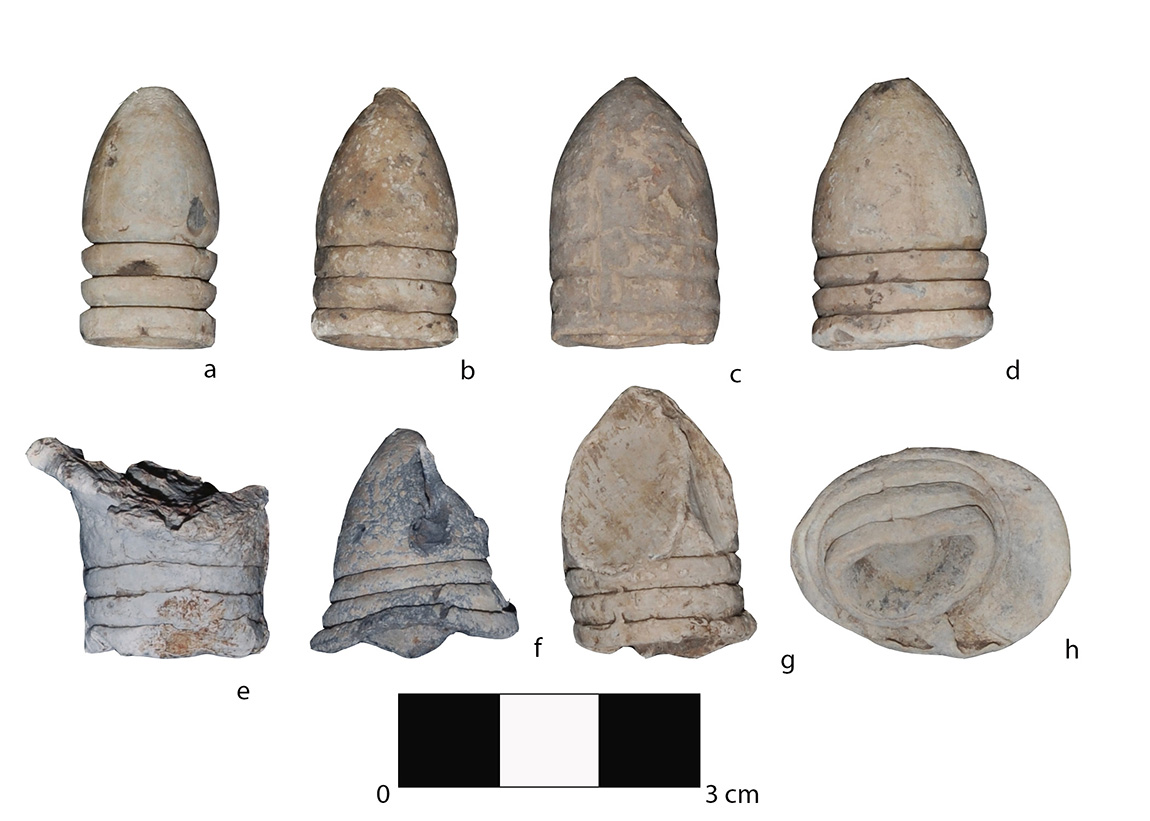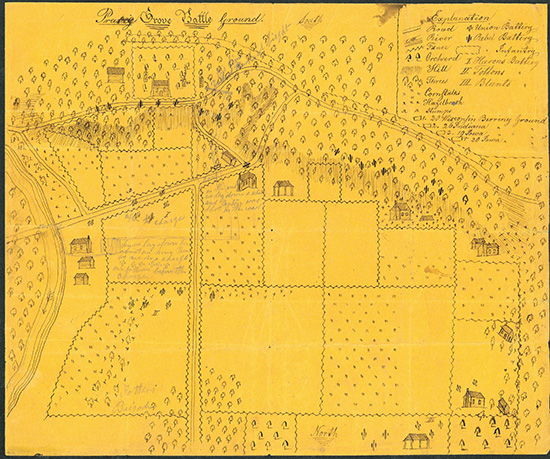
Jessica Kowalski and Jared Pebworth, Arkansas Archeological Survey - University of Arkansas Fayetteville Station
Artifact of the Month – October 2020
Elongated balls are conical lead projectiles with a hollow base that were used in muzzle-loading rifles during the nineteenth century. These projectiles were primarily produced in two calibers, .58 and .69 (calibers here based on inches). Developed in part by a French military officer, Captain Claude-Etienne Minié, in 1849, this type of small arms ammunition was adapted and manufactured widely in America during the Civil War by both Union and Confederate armories (O’Connell 1989; Thomas 1997; Thomas and Thomas 1996). Elongated balls were made by pressing lead into molds, a process called “swaging,” and by casting. Cartridges, including the ball and gun powder, were provided to soldiers in the field. Soldiers on the battlefield would open the paper cartridges with their teeth, pour the gunpower down rifle barrels, and load the bullets into the barrel using a ramrod.

